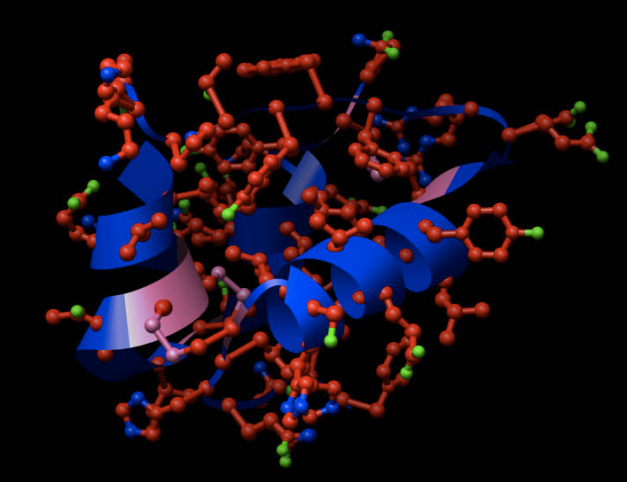Note: I made a few minor edits and added to the title on 1/29. The article was formerly called
Did You Know Insulin Is a GMO? Insulin is not a GMO in and of itself, but made with genetically engineered e coli. I don’t want to mislead in any way. My general point is that what would we do without affordable insulin? Transgenic technology makes insulin affordable. ~S4H
~~~ ~~~ ~~~ ~~~ ~~~ ~~~ ~~~ ~~~ ~~~ ~~~ ~~~ ~~~ ~~~ ~~~ ~~~ ~~~ ~~~ ~~~
If your position is anti-GMO, I would like to ask you an honest question. When you first became aware that 70% of our food is genetically modified, when it made you angry and scared you – maybe fresh from a screening of Jeffrey Smith’s “Genetic Roulette” or Jeremy Seifert’s “GMO OMG” – were you also aware that insulin, the common insulin injected daily by diabetics worldwide, is genetically modified in similar fashion to the way food is? If you’re like I was when I jumped on the anti-GMO bandwagon (I have since jumped off of it), your honest answer is probably no, you didn’t know.
Finding out that genetic engineering was used for the production of insulin and other common drugs was huge news, not because it scared me or I thought it was wrong, but because I realized instantaneously that transgenic technology had value, that without this process, insulin and other engineered drugs would be much harder to extract or produce and likely cost prohibitive.
I also realized that to pick on some GMOs but not others was rather arbitrary. This was an early clue in what was to become many indicating to me that I had picked the wrong side.
I invite you to read the following brief but excellent article sourced directly from Biology Fortified.
GMO Cheerios vs. GMO Insulin
 Insulin, Source: Роман Бекке/Wikimedia Commons (license linked below)
Insulin, Source: Роман Бекке/Wikimedia Commons (license linked below)
The recent decision of General Mills to produce GMO-free Cheerios is interesting from marketing, political, and biological angles. However, what I am interested in most is if GMO Inside and other anti-GMO groups will realize that the process of producing the GMO ingredients in Cheerios (corn starch and sugar) is identical in principle to the way insulin—and many other drugs, like your dog’s rabies shot—is made. If they adamantly insist on GMO-free food products, how can they not extend their request to all pharmaceutical products made with the same genetic engineering technology? If we must have GMO-free Cheerios, then we must have GMO-free insulin, right?
Insulin is made, in principle, the same way the GMO corn starch and GMO sugar in Cheerios is. To start, the DNA sequence for human insulin is inserted into the bacteria E. coli, which creates an organism that now has DNA from two very different species in it. This new E. coli is a genetically modified organism (GMO) and serves as a cheap factory for mass-producing the human insulin protein. After a while, the E. coli bacteria has produced large amounts of the human protein to the point where the protein can be extracted from the bacteria cells and purified before being packaged into insulin shots. The insulin protein produced via genetic engineering is chemically identical to the insulin protein made in a healthy human body.
Genetically engineered plants are made through a very similar process. A gene of particular interest is inserted into a plant. (For details on how exactly this happens, check out this video from GMO Answers.) This gene may be useful for insect resistance, like the Bt genes, or useful for other agricultural purposes. Eventually the plant is harvested and processed for its crop. The actual plant tissue that has the genetically engineered DNA in it may or may not be directly eaten by consumers; it depends on what the plant is harvested for. In the case of Cheerios, corn starch and sugar are processed and refined from their respective plants with DNA removed. The corn starch and sugar produced without GMOs is chemically identical to their GMO counterparts; the genes added to the GMO plants did not change the properties of corn starch or sugar.
The genetic engineering processes of making insulin, corn starch, and sugar are the same in principle. This “sameness” adds unavoidable complexity to the GMO discussion. Genetic engineering seems to have developed two faces: life-threatening and life-saving. Anti-GMO organizations will sooner or later have to confront this contradicting duality, especially as genetic engineering opens a new chapter for medical advances, such as the potential cures for cancer and HIV.
So when should we expect GMO Inside to set up another petition, this time for GMO-free insulin? Part of me hopes soon since maybe the juxtaposition of a long-trusted drug and anti-GMO propaganda will be enough to resolve the two faces of genetic engineering into one honest representation.
~~~ ~~~ ~~~ ~~~ ~~~ ~~~ ~~~ ~~~ ~~~ ~~~ ~~~ ~~~ ~~~ ~~~ ~~~ ~~~
About the image: Image was produced using the Chimera package from the Computer Graphics Laboratory, University of California, San Francisco (supported by NIH P41 RR-01)